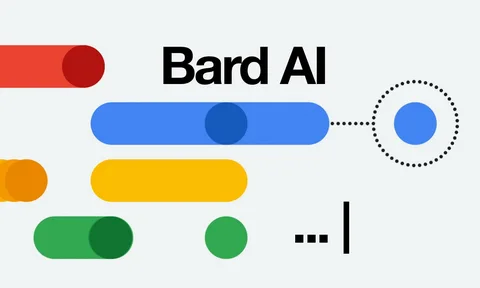In the rapidly advancing field of artificial intelligence (AI), language models have gained significant attention. Two prominent players in this domain are Google Bard and OpenAI ChatGPT. These AI-powered models have revolutionized natural language processing and are being utilized for various applications. This article aims to compare and contrast Google Bard and OpenAI ChatGPT, shedding light on their features, strengths, and limitations.
Overview of Google Bard:
Google Bard is an AI language model developed by Google. It has been designed to generate creative and coherent poetry based on user prompts. By leveraging advanced machine learning techniques, Google Bard can compose poems in different styles and themes. Its deep understanding of language and poetic structure allows it to produce compelling and aesthetically pleasing verses.
Overview of OpenAI ChatGPT:
OpenAI ChatGPT is an AI language model developed by OpenAI, a leading AI research organization. Unlike Google Bard, ChatGPT focuses on generating human-like conversational responses. It excels at understanding and producing text in a conversational context. ChatGPT has been trained on a vast amount of internet data, enabling it to provide informative and contextually relevant answers.
Training Data and Models:
Both Google Bard and OpenAI ChatGPT rely on large-scale datasets for training. Google Bard’s training data consists of numerous poetry collections, literary works, and online resources, ensuring a comprehensive understanding of poetic techniques and styles. OpenAI ChatGPT, on the other hand, has been trained on diverse internet sources, including books, articles, and conversations, giving it a broad knowledge base.
Generation Capabilities:
Google Bard’s primary strength lies in its ability to generate poetic compositions. It can produce verses that adhere to specific poetic forms, such as sonnets, haikus, or free verse. Google Bard’s poetic expertise enables it to mimic the style and tone of various famous poets, making it a valuable tool for writers and enthusiasts looking for creative inspiration.
In contrast, OpenAI ChatGPT is adept at generating conversational text. It can engage in dynamic and interactive discussions on a wide range of topics. Its ability to provide coherent and contextually appropriate responses has made it a popular choice for chatbots, customer support systems, and virtual assistants.
Understanding Context:
Both Google Bard and OpenAI ChatGPT excel in understanding the context of user input. Google Bard’s training on extensive poetry resources allows it to grasp nuanced poetic cues and symbolism, leading to more nuanced and evocative responses. ChatGPT, on the other hand, understands conversational context, including references, follow-up questions, and even humor, making it more suitable for engaging in dynamic conversations.
Limitations:
While both models exhibit impressive capabilities, they also have certain limitations. Google Bard’s focus on poetry restricts its application to creative writing and poetic expression. It may struggle with generating prose or responding to non-poetic queries effectively. OpenAI ChatGPT, while excellent at generating conversational responses, can sometimes produce answers that lack accuracy or factual correctness. Its reliance on internet data can lead to biased or inappropriate responses.
Ethical Considerations:
Both Google Bard and OpenAI ChatGPT can inadvertently generate content that promotes bias, misinformation, or offensive material. Responsible use and ongoing efforts to mitigate these issues are essential to ensure the ethical deployment of these models.
Future Developments:
Google Bard and OpenAI ChatGPT represent a glimpse into the future of AI-driven language models. Ongoing research and development efforts aim to address the limitations of these models, enhance their capabilities, and make them more adaptable to various domains and applications. Advancements in training techniques, data curation, and fine-tuning are expected to pave the way for more powerful and responsible AI language models.
Conclusion:
Google Bard and OpenAI ChatGPT are formidable AI language models, each with its own unique strengths and applications. While Google Bard shines in the realm of poetic expression, OpenAI ChatGPT excels in conversational contexts. Understanding their features, limitations, and ethical considerations is essential for leveraging their potential effectively. As the field of AI language models continues to evolve, we can expect further advancements and novel applications that will shape the future of human-machine interaction.




